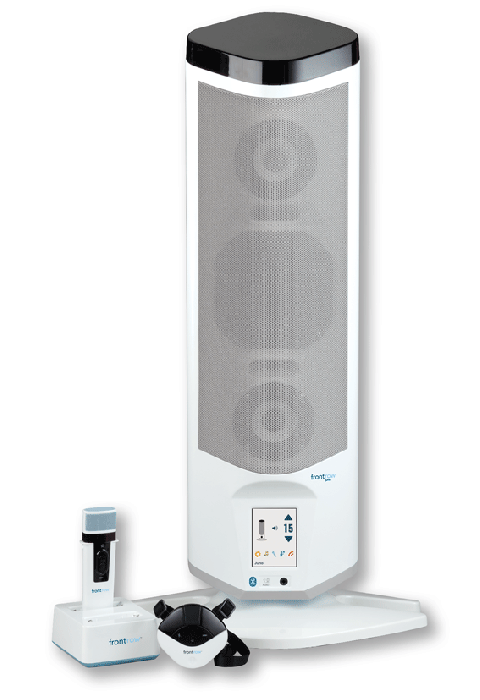Juno Soundfield System
When it comes to hearing, children are not smaller versions of their parents and teachers. The brain structures needed to help children listen effectively in less-than-ideal conditions don't fully develop until they're about 13 years old — with some aspects not maturing until the end of high school. While they're still developing their language skills, students lack the vocabulary needed to fill in the blanks when they miss a new word or word ending.
FrontRow systems help students hear every word. FrontRow soundfield speakers increase the volume and clarity of the teacher's voice, presentations, videos, and other audio. Students can hear effectively without needing to fill in the gaps, whether they're in the front or the back of the classroom.

Most classrooms aren't the ideal place for learning
Research has shown students at the back of a classroom can miss up to 40% of what their teacher says. It’s no coincidence that the students who are most inattentive and prone to behaviour problems are often found in the back row or seated far away from the teacher.
To understand 100% of speech sounds, children need to hear the teacher’s voice spoken 15 decibels louder than the background noise. But in a typical K-12 classroom, the teacher’s voice is barely 5 decibels louder than the surrounding noise — so only those children closest to the teacher can get the most information with the least amount of effort.
At least 45% of the class day requires listening. Teachers use kids’ ears as a pathway to their brains, especially in the lower grades where children are gaining basic skills. Even with good behavioural control of classrooms to minimise student-generated noise, a teacher can do little or nothing to reduce seating distance and background noise.
The limitations of children's brains and coping skills, plus the obstacles of noise and distance from the teacher, combine to erode speech perception, attention, behaviour, and overall classroom performance.




